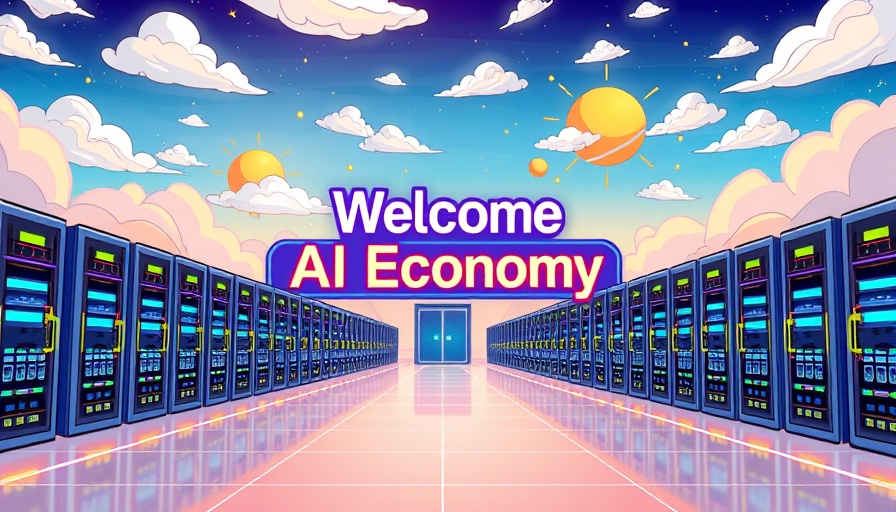
The AI Economy: A New Era for Business
Artificial Intelligence (AI) is no longer a groundbreaking concept restricted to tech enthusiasts; it has emerged as a cornerstone of the US economy. As outlined in the recent analysis, AI's influence is becoming increasingly profound, shaping financial markets and dictating corporate strategies even amidst economic turbulence. What we're witnessing is not merely a tech trend but a seismic shift in how business operates, with AI at its core.
In 'Welcome to the AI Economy', the discussion dives into how AI is reshaping economic landscapes, exploring key insights that sparked deeper analysis on our end.
From Investment to Infrastructure: The Spending Surge
The four major tech companies — Meta, Microsoft, Amazon, and Google — are on course to spend nearly $400 billion on AI infrastructure this year alone. This staggering figure surpasses not only the previous spending patterns during the cloud boom but also exceeds defense expenditures by the EU last year. The AI boom is revamping the economy, with some analysts asserting that today's investments hold a level of importance and potential akin to the establishment of railroads in the 19th century.
Shifting Perceptions: Investors Embrace AI
Contrary to previous skepticism, Wall Street has shown a growing comfort level with heavy spending on AI projects. Giants like Microsoft report that their cloud revenue has soared by 39% in conjunction with their AI investments, signifying a positive ROI (Return on Investment) that investors find hard to resist. This newfound enthusiasm marks a departure from the cautious outlook prevalent last year, where opinions varied widely among investors about the sustainability of such expenditures.
The Labor Market Transformation
It's essential to note that the AI boom is also reshaping the labor market. The value derived from AI capex (capital expenditures) is nuanced; some economists argue that it is currently outperforming consumer spending as a growth driver. AI's impact is not merely abstract but tangible, with investments serving as a private sector stimulus bolstering economic growth as companies leverage automation and intelligence across their operations.
The Reality of Consumer Surplus
Interestingly, the benefits of AI are often perceived differently in the economic landscape. A study highlights that consumer surplus derived from generative AI tools has reached an impressive $97 billion, dwarfing the revenue reported by leading AI firms like OpenAI, Microsoft, and Google. This consumer-oriented advantage reinforces the argument that AI's true worth is not just in company profits but in the broader welfare it introduces for users. Such fluctuations offer a fresh perspective for business owners to consider leveraging AI tools for increased efficiencies.
Challenges Ahead: Is a Bubble Forming?
The tremendous explosion in spending naturally leads to concerns about whether this trajectory can be sustained or if we're looking at the prelude to an economic bubble. Analysts are divided: some see today's vast investments as paving the way for a technological revolution that will yield unprecedented societal benefits, while others regard it as overspending reminiscent of historical bubbles. The distinction crucially lies in how AI infrastructure evolves and sustains itself in the future.
The Need for Action: START USING AI NOW!
The evolution of AI in the economy suggests that businesses hesitant to adopt these technologies could soon find themselves at a disadvantage. As market demand becomes more sophisticated, integrating AI solutions can enhance operational efficiencies and foster growth. Whether it's through automating repetitive tasks or using predictive analytics for better decision-making, NOW is the time to embrace AI as a transformative tool in your business strategy.
Conclusion: The Path Ahead
The insights derived from the AI economy underscore the significance of understanding its impact on both corporate strategy and consumer behavior. With companies continuing to invest heavily in AI, recognizing the balance between immediate returns and long-term investments is essential for business owners. Engaging with the AI movement is not just a novel idea; it is increasingly becoming a necessity for survival and success in today’s fast-paced market landscape.
 Add Row
Add Row  Add
Add 




Write A Comment